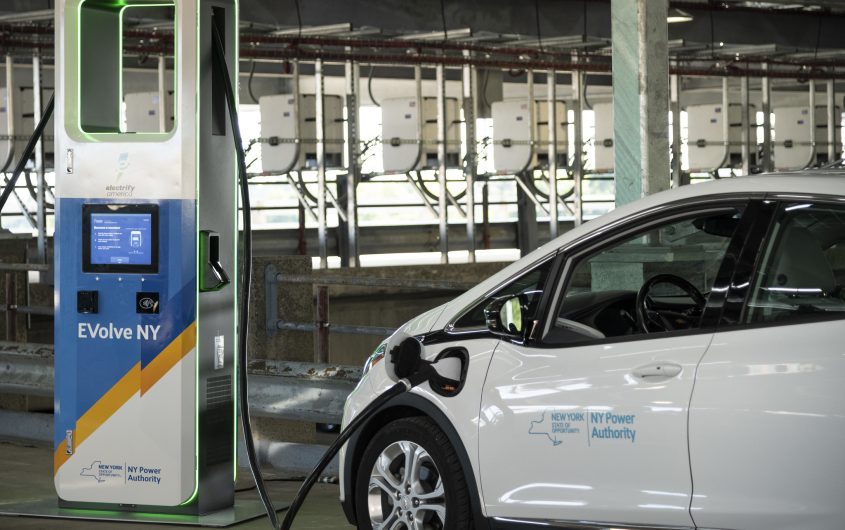
NYS DEC via Flickr
The IRA and the Meaning of “Free Trade”

Peter S. Rashish
Vice President; Director, Geoeconomics Program
Peter S. Rashish, who counts over 30 years of experience counseling corporations, think tanks, foundations, and international organizations on transatlantic trade and economic strategy, is Vice President and Director of the Geoeconomics Program at AICGS. He also writes The Wider Atlantic blog.
Mr. Rashish has served as Vice President for Europe and Eurasia at the U.S. Chamber of Commerce, where he spearheaded the Chamber’s advocacy ahead of the launch of the Transatlantic Trade and Investment Partnership. Previously, Mr. Rashish was a Senior Advisor for Europe at McLarty Associates, Executive Vice President of the European Institute, and a staff member and consultant at the International Energy Agency, the World Bank, UNCTAD, the Atlantic Council, the Bertelsmann Foundation, and the German Marshall Fund.
Mr. Rashish has testified before the House Financial Services Subcommittee on International Monetary Policy and Trade and the House Foreign Affairs Subcommittee on Europe and Eurasia and has advised three U.S. presidential campaigns. He has been a featured speaker at the Munich Security Conference, the Aspen Ideas Festival, and the Salzburg Global Seminar and is a member of the Board of Directors of the Jean Monnet Institute in Paris and a Senior Advisor to the European Policy Centre in Brussels. His commentaries have been published in The New York Times, the Financial Times, The Wall Street Journal, Foreign Policy, and The National Interest, and he has appeared on PBS, CNBC, CNN, NPR, and the BBC.
He earned a BA from Harvard College and an MPhil in international relations from Oxford University. He speaks French, German, Italian, and Spanish.
The Inflation Reduction Act (IRA) approved by the U.S. Congress last August continues to provoke transatlantic frictions. The European Union has welcomed the climate investments in the IRA that will help the United States meet its net-zero commitments under the Paris Agreement. It is concerned, however, that the local content provisions in the bill’s $369 billion in subsidies for electric vehicle (EV) purchases not only violate World Trade Organization (WTO) rules but also favor U.S.-based producers and suppliers.
The Biden administration is not protectionist, and it does not advocate a law of the jungle international economic order where might makes right. But in the effort last summer to pass the IRA before the mid-term elections, the political attraction of a bill that combined measures to combat climate change, create jobs, and push back against Chinese dominance of EV supply chains—a powerful trifecta—may have led to less attention being paid to its implications for key U.S. trading partners.
The administration has already taken steps to assuage European concerns. At the end of December, the U.S. Department of the Treasury issued updated guidance clarifying that U.S. consumers who lease (rather than purchase) imported European electric vehicles will be able to take advantage of the $7,500 in tax credits the IRA provides for “commercial vehicles,” which do not have to meet the stringent North American (United States, Canada, Mexico) requirements for the supply of battery components and critical minerals and as a location of final assembly.
By next month the department has also indicated that it will clarify one key aspect of the IRA with bearing on imports from the European Union, Japan, the UK, and other foreign automobile producers: the language in the bill that exempts imports of EV critical minerals from the North American origin rules if they come from countries with which the United States has a “free trade agreement.”
The treasury department has already pointed out that “the term ‘free trade agreement’ is not defined in the Inflation Reduction Act (or in any other statute).” That flexibility suggests there should be room to take steps to further reduce transatlantic tensions. One option could be to negotiate a new, plurilateral critical minerals or raw materials agreement among the United States, the European Union, and other economies. Such sectoral deals are normally allowed under WTO rules. Another approach would be to apply the term “free trade agreement” to the 48-member WTO Government Procurement Agreement that includes the EU and other key U.S. trading partners.
In a shifting global environment where trade policy is becoming focused not just on economic growth but also on values and security a new gauge for what defines a close trading partner, one less dependent on tariff reductions, is needed.
A third option would involve taking a more expansive view of what can and should lead to increased trade.
While the U.S.-EU Trade and Technology Council (TTC) launched in 2021 does not include new, de jure market access commitments through tariff reductions, it does commit the two sides to “promote U.S. and EU competitiveness and prosperity and the spread of democratic, market-oriented values.”
If the TTC can achieve its specific objectives—among them, strengthening transatlantic supply chains, forging common rules for artificial intelligence, and creating joint approaches to sustainable trade and decarbonization—it will lead de facto to more trade across the Atlantic. The end results of the TTC and a traditional free trade agreement (for example, the Transatlantic Trade and Investment Partnership launched in 2013 but never concluded) would then be similar, even if the means differ.
In a shifting global environment where trade policy is rightly becoming focused not just on economic growth but also on values and security (protecting the climate, reducing economic dependence on China) a new gauge for what defines a close trading partner, one less dependent on tariff reductions, is needed. While it may be premature for the IRA to grant the U.S-EU Trade and Technology Council the status of a “free trade agreement,” that term would benefit from a rethink to adapt it to the times.









